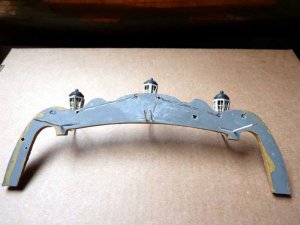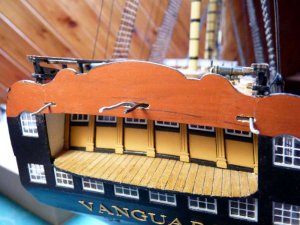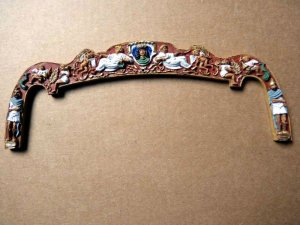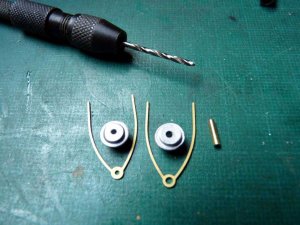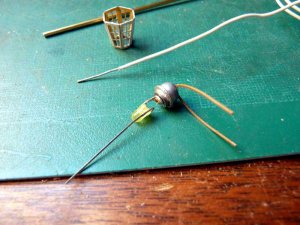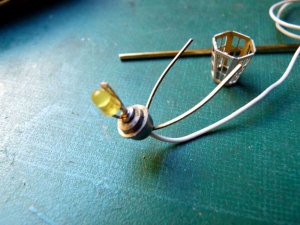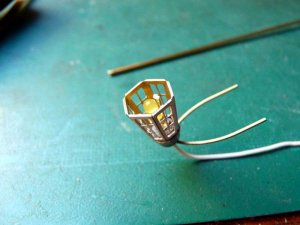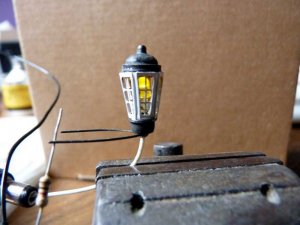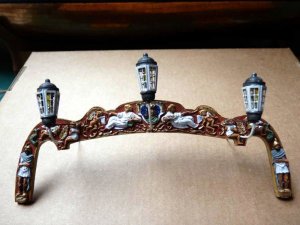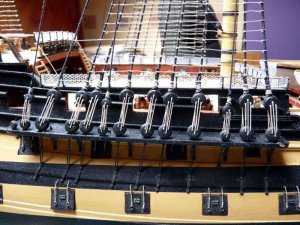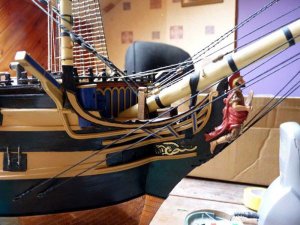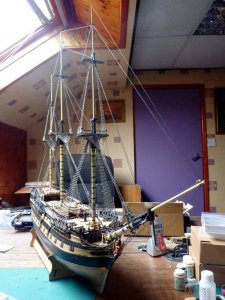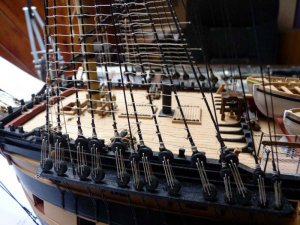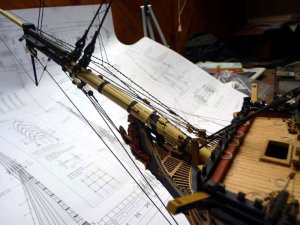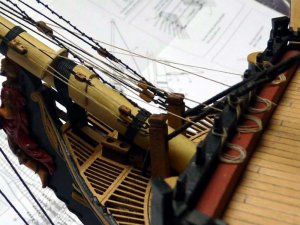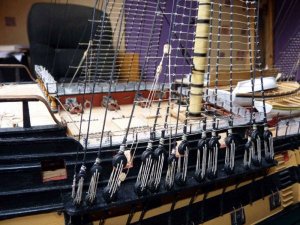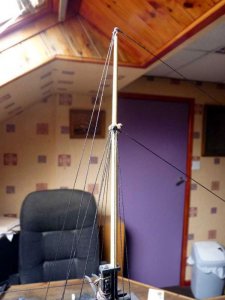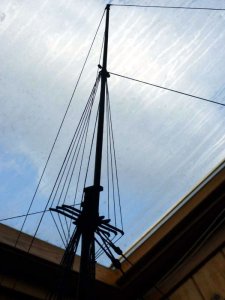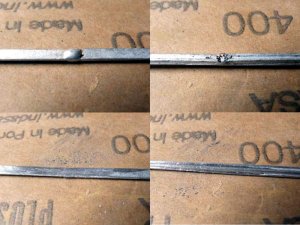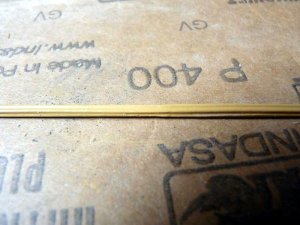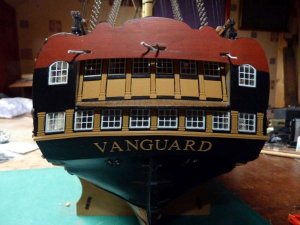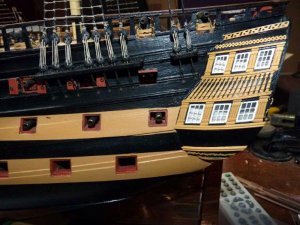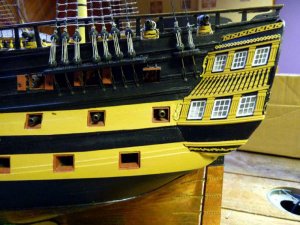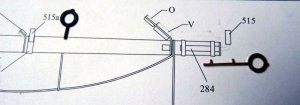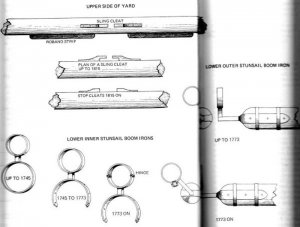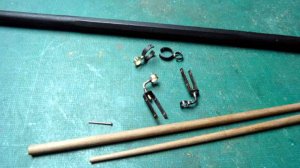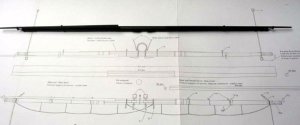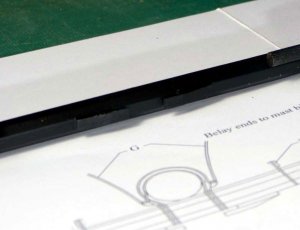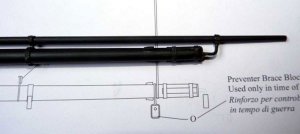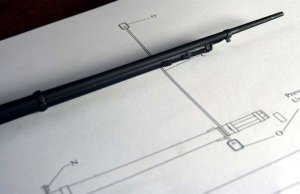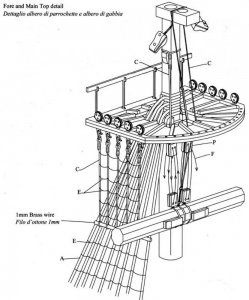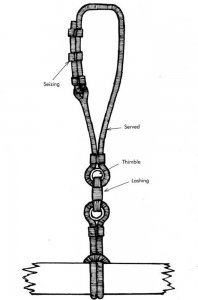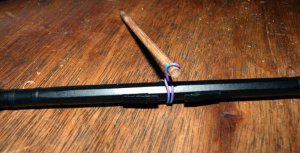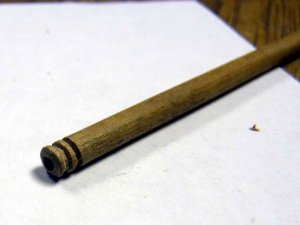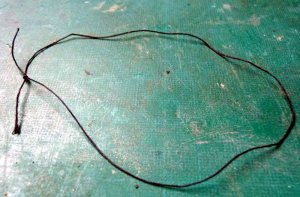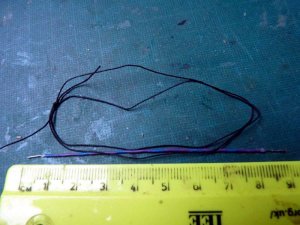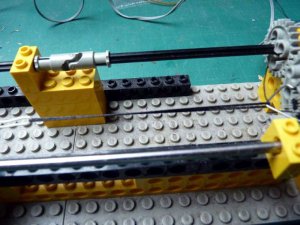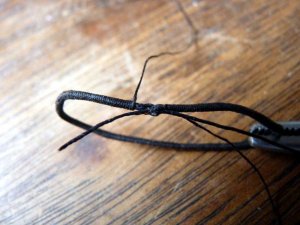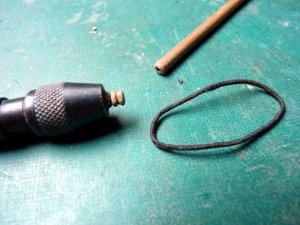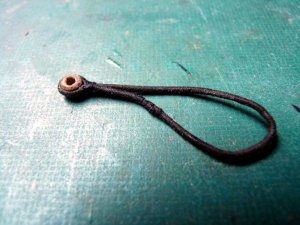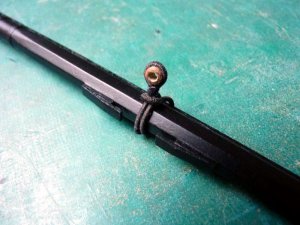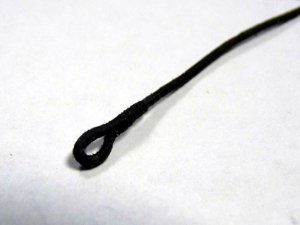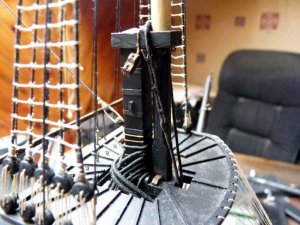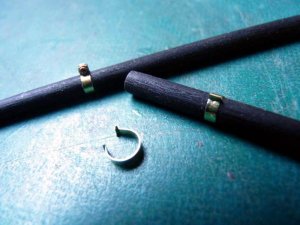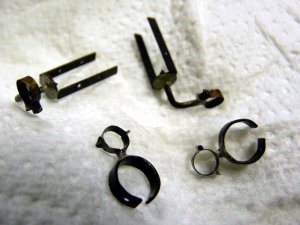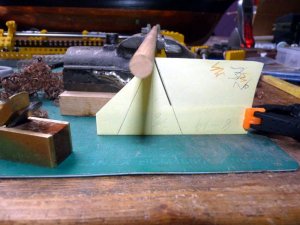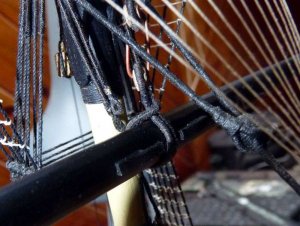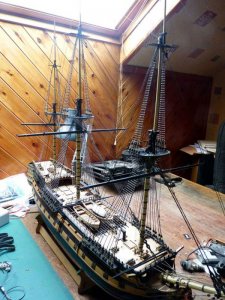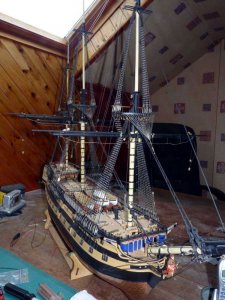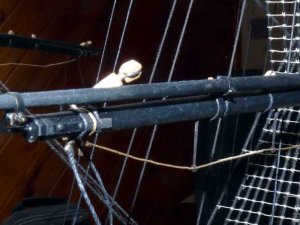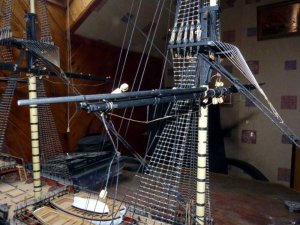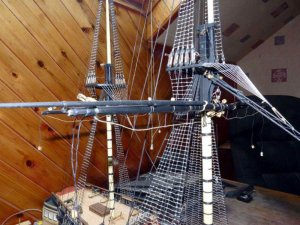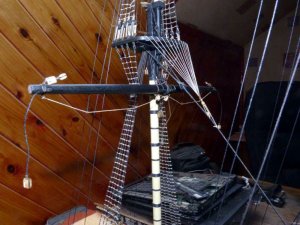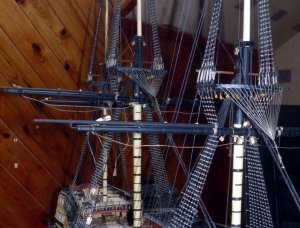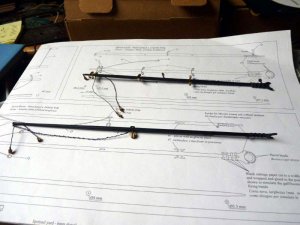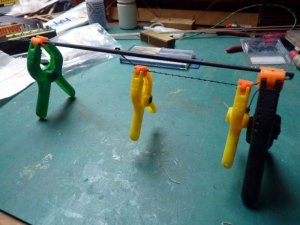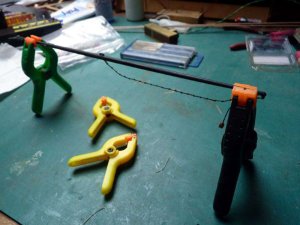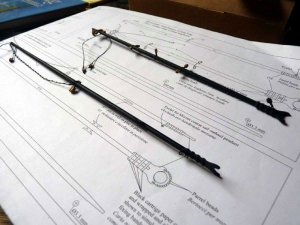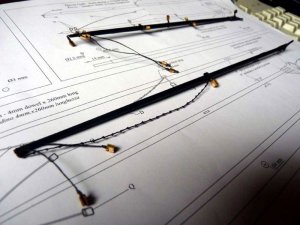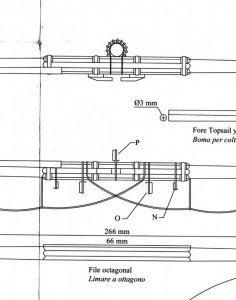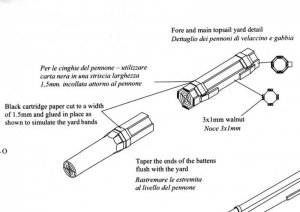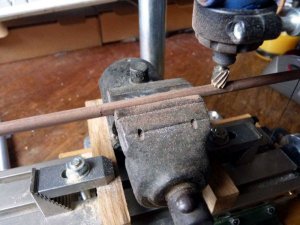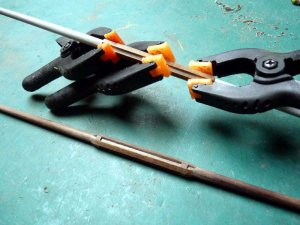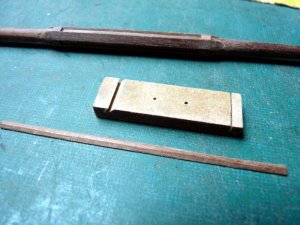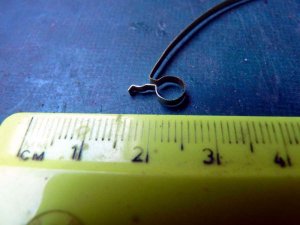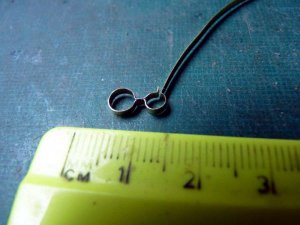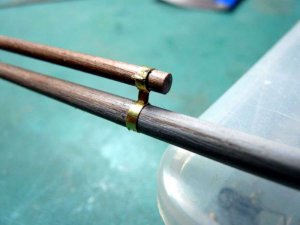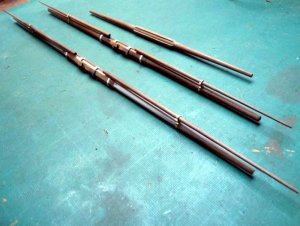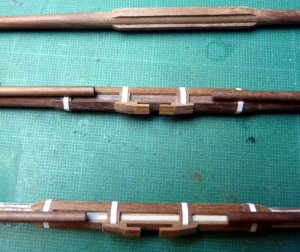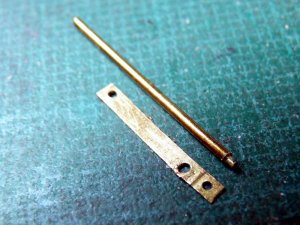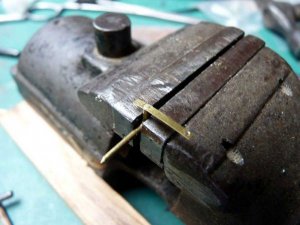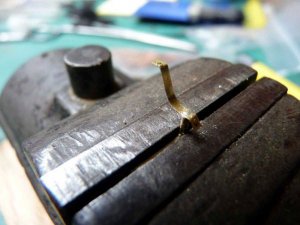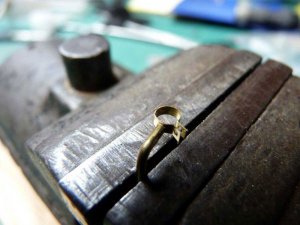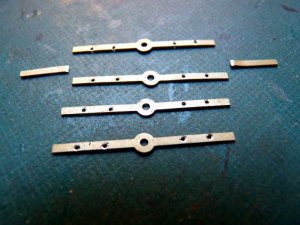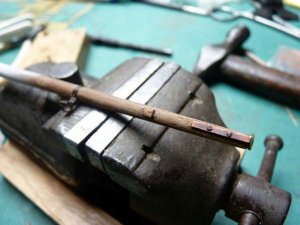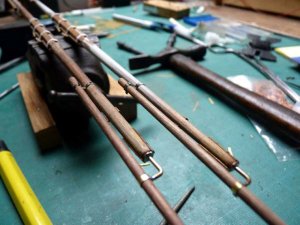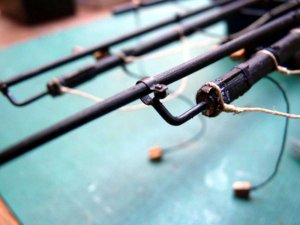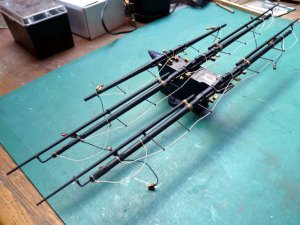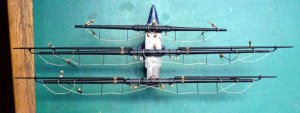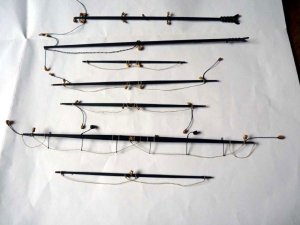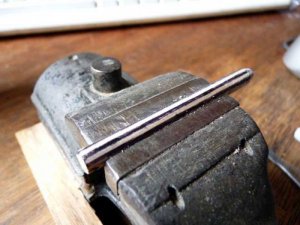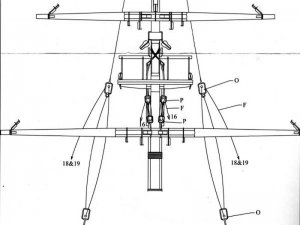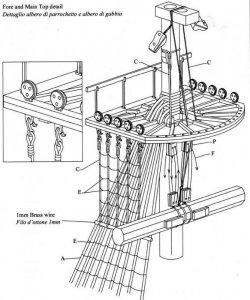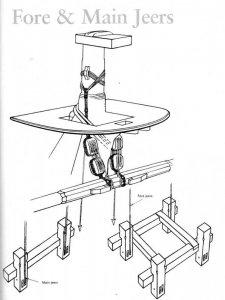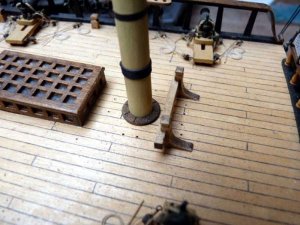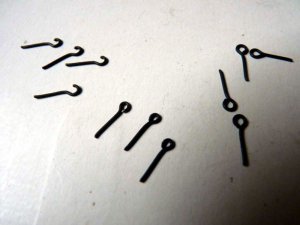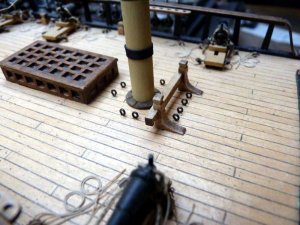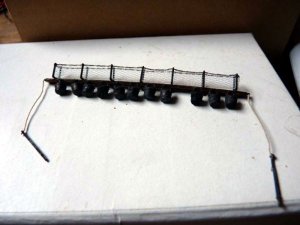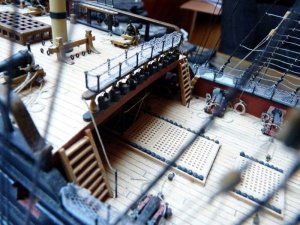Time for a long overdue update.
I’ve now almost – possibly - finished the standing rigging.
The ‘almost’ is because I know of a couple of jobs still to do, neither of which should take very long.
The first is to lace up the deadeyes on the topmast backstays properly. At the moment they’ve just got wire links in them.
The second is similar, to fit the topgallant back stays.
The ‘possibly’ is a bit more of a puzzle and is whether or not I should fit any royal stays. At first I thought these had simply been omitted from the plans but now I’m not so sure. Checking through the plans I find that not only are there no royal stays, there are no royal yards or sails either.
I’ve sent Chris Watton a PM to see if he can clarify things.
Anyway, here’s how it looks at the moment:
PICT_V_5701
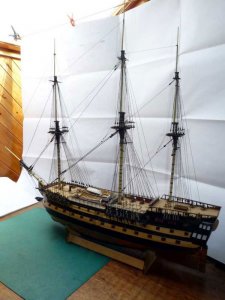
It’s got a bit on the large side, that’s the largest sheet of paper I’ve got acting as the background!
The topgallant shrouds are shown as being simply tied off under the topmast deadeyes. I opted to insert ‘thimbles’ and lashings at that point. They’re not easy to make out in the following picture but you can just make out the arrangement:
PICT_V_5702
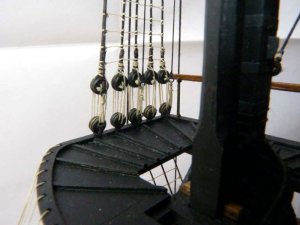
Now we come to the fore stays for the topgallants and some minor guessing games are called for.
The mizzen topgallant stay is shown heading down to the fore top where it is presumably made off to one of the eyelets there. I don’t know what all these are for and opted to use the first from centre on the starboard side. Again, I inserted ‘thimbles’ and a lashing:
PICT_V_5703
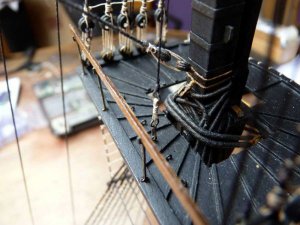
The main topgallant stay is made of to the collar of the block for the topmast stay as per the instructions:
PICT_V_5704
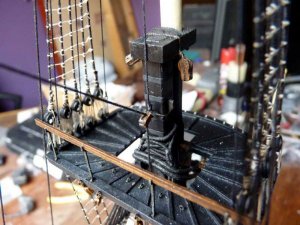
Finally, the fore topgallant stay is made off via a tackle to the starboard bow timberhead. The running end of this tackle (line number 3 on the plan) heads sternwards, never to be seen again. I’ve assumed it runs to the fore beakhead bulkhead timberheads, but which one is the question. The plans show lots of lines will be made off here later.
This is how it’s made off:
PICT_V_5705
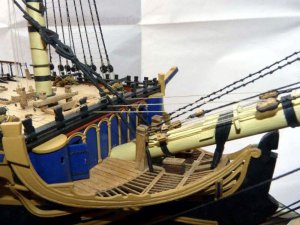
I’ve now almost – possibly - finished the standing rigging.
The ‘almost’ is because I know of a couple of jobs still to do, neither of which should take very long.
The first is to lace up the deadeyes on the topmast backstays properly. At the moment they’ve just got wire links in them.
The second is similar, to fit the topgallant back stays.
The ‘possibly’ is a bit more of a puzzle and is whether or not I should fit any royal stays. At first I thought these had simply been omitted from the plans but now I’m not so sure. Checking through the plans I find that not only are there no royal stays, there are no royal yards or sails either.
I’ve sent Chris Watton a PM to see if he can clarify things.
Anyway, here’s how it looks at the moment:
PICT_V_5701

It’s got a bit on the large side, that’s the largest sheet of paper I’ve got acting as the background!
The topgallant shrouds are shown as being simply tied off under the topmast deadeyes. I opted to insert ‘thimbles’ and lashings at that point. They’re not easy to make out in the following picture but you can just make out the arrangement:
PICT_V_5702

Now we come to the fore stays for the topgallants and some minor guessing games are called for.
The mizzen topgallant stay is shown heading down to the fore top where it is presumably made off to one of the eyelets there. I don’t know what all these are for and opted to use the first from centre on the starboard side. Again, I inserted ‘thimbles’ and a lashing:
PICT_V_5703

The main topgallant stay is made of to the collar of the block for the topmast stay as per the instructions:
PICT_V_5704

Finally, the fore topgallant stay is made off via a tackle to the starboard bow timberhead. The running end of this tackle (line number 3 on the plan) heads sternwards, never to be seen again. I’ve assumed it runs to the fore beakhead bulkhead timberheads, but which one is the question. The plans show lots of lines will be made off here later.
This is how it’s made off:
PICT_V_5705

Last edited:


